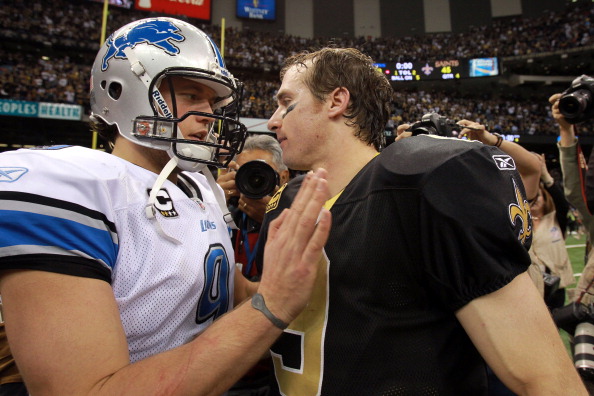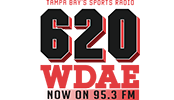Airing it Out
Written by Justin Zovas (follow him on twitter Justin_Zovas)
It comes as a surprise to no one that the NFL has become a passing league. In 2008, teams passed on 55.56% of plays. In 2009, teams threw the football 56.39% of the time, 57.01% in 2010, and 57.22% in 2011. Anyone else seeing a trend developing here? The prevalence of passing in the NFL has consistently risen since 2008 with each season breaking the record set during the prior season. Last season alone, we witnessed three different quarterbacks throw for over 5,000 yards, a feat that had only occurred twice before in NFL history. Thanks to a combination of rule changes to promote player safety, defensive secondaries struggle to sustain a level of performance that has been established in the past. As a result, the NFL has evolved into an aerial league and the quarterback position is now more important than ever.
The consensus elite QB’s; Aaron Rodgers, Tom Brady, and Drew Brees are a combined 200-141-7 (58.7%) ATS as starters with their respective teams’. This stat isn’t meant to suggest automatically going out and betting these guys blindly, (past success does not ensure future value; efficient market theory) but rather serves to illustrate how powerful an effect elite quarterbacks can have on the outcome of games (with all due respect to Trent Dilfer and the game managers of yesteryear).
Handicapping the quarterback position and a defenses’ ability to stop a passing attack is paramount in order to successfully predict the final score of NFL games. I calculated an efficiency ratio to quantify my hypothesis. The ratio compares net yards per passing attempt and net yards per passing attempt allowed (NY/PA divided by NY/PA allowed). A ratio equal to one indicates for every one yard an offense gains per pass attempt, the defense allowed one yard per pass attempt.
NET YARDS/PASS ATTEMPT = (Passing Yards – Sack Yards) / (Passes Attempted – Times Sacked)
In summation, the ratio encapsulates a team’s ability to pass, protect their quarterback, stop the pass, and get after the opposing quarterback. Below is each team’s ratio from the 2011 season (stats courtesy Pro-Football Reference).
|
Team |
N. Yds/Att. |
N. Yds./Att. Allowed |
Ratio |
SU |
ATS |
| Arizona Cardinals |
5.9 |
6 |
0.98 |
8-8 |
9-7 |
| Atlanta Falcons |
6.8 |
6.4 |
1.06 |
10-7 |
8-8-1 |
| Baltimore Ravens |
5.9 |
5.4 |
1.09 |
13-5 |
9-8-1 |
| Buffalo Bills |
6.2 |
6.9 |
0.90 |
6-10 |
10-6 |
| Carolina Panthers |
6.9 |
7.6 |
0.91 |
6-10 |
9-7 |
| Chicago Bears |
5.8 |
6.1 |
0.95 |
8-8 |
8-8 |
| Cincinnati Bengals |
6 |
5.8 |
1.03 |
9-8 |
8-7-2 |
| Cleveland Browns |
5.1 |
5.9 |
0.86 |
4-12 |
8-7-1 |
| Dallas Cowboys |
6.9 |
6.7 |
1.03 |
8-8 |
5-10-1 |
| Denver Broncos |
5.2 |
6.4 |
0.81 |
9-9 |
8-10 |
| Detroit Lions |
6.9 |
5.9 |
1.17 |
10-7 |
7-10 |
| Green Bay Packers |
8.3 |
7.2 |
1.15 |
15-2 |
11-6 |
| Houston Texans |
7 |
5.2 |
1.35 |
11-7 |
12-5-1 |
| Indianapolis Colts |
5.3 |
7 |
0.76 |
2-14 |
6-10 |
| Jacksonville Jaguars |
4.2 |
6.1 |
0.69 |
5-11 |
4-11-1 |
| Kansas CityChiefs |
5.8 |
6.7 |
0.87 |
7-9 |
9-7 |
| Miami Dolphins |
5.9 |
6.3 |
0.94 |
6-10 |
8-7-1 |
| Minnesota Vikings |
5.3 |
6.8 |
0.78 |
3-13 |
7-9 |
| New England Patriots |
7.9 |
7.1 |
1.11 |
15-4 |
12-7 |
| New Orleans Saints |
7.8 |
6.3 |
1.24 |
14-4 |
13-5 |
| New York Giants |
7.7 |
6.4 |
1.20 |
13-7 |
12-8 |
| New York Jets |
5.6 |
5.9 |
0.95 |
8-8 |
6-9-1 |
| Oakland Raiders |
7.2 |
6.3 |
1.14 |
8-8 |
10-6 |
| Philadelphia Eagles |
7 |
6 |
1.17 |
8-8 |
8-8 |
| Pittsburgh Steelers |
7 |
4.9 |
1.43 |
12-5 |
7-10 |
| San Diego Chargers |
7.2 |
7 |
1.03 |
8-8 |
6-10 |
| San Francisco 49ers |
5.9 |
6 |
0.98 |
14-4 |
12-4-2 |
| Seattle Seahawks |
5.6 |
6.1 |
0.92 |
7-9 |
9-5-2 |
| St. Louis Rams |
4.8 |
6.3 |
0.76 |
2-14 |
3-12-1 |
| Tampa Bay Buccaneers |
5.9 |
7.6 |
0.78 |
4-12 |
4-12 |
| Tennessee Titans |
6.5 |
5.9 |
1.10 |
9-7 |
6-8-2 |
| Washington Redskins |
6 |
6.5 |
0.92 |
5-11 |
7-9 |
| League Average |
6.2969 |
6.3344 |
0.99 |
The top five teams in this ratio were a combined 65-25 (72.2%) SU and 55-34-1(61.8%) ATS. The bottom five teams 12-52 (18.8%) SU and 22-39-3 (36.1%) ATS. Despite all the other variables that can determine the final score, there is a strong correlation between a team’s ratio and its success both straight up and against the spread. Thus, this is a ratio that should command strong attention when evaluating the strength of a team. The ratio is more retroactive than predictive, however it does bear watching for strong correlations. Here are some of my personal takeaways from the 2011 results that can be applied to the upcoming season.
TRENDING UP:
- Dallas Cowboys-America’s team had a very respectable ratio of 1.03 in 2011. The team’s passing game was in the upper third of the league, but the Cowboy’s struggled to stop the pass. The defense is now in it’s second year of Rob Ryan’s complex defensive scheme. Couple this with the influx of talent in the secondary in Brandon Carr and Morris Claiborne, expect an improvement in the Cowboy’s Net Yards/Passing Attempt Allowed in 2012.
TRENDING DOWN
- Miami Dolphins- The Dolphins had an average rating of 0.94 in 2011. The team was extremely undervalued in the second half of the season, dominating against the spread at a mark of 8-1-1 in its final 10 games. During that stretch, Matt Moore was the starting quarterback. With the insertion of raw rookie quarterback Ryan Tannehill in conjunction with the team trading away star corner Vontae Davis, the Dolphins appear to be a team rebuilding for the future not the present. Expect a very poor rating for them in 2012.
MISLEADING
- Pittsburgh Steelers- The Steelers led the league in the rating (1.43) thanks to a stout defense and a consistent passing game but struggled against the spread nonetheless (7-10) due to a -13 turnover margin. Expect this number to revert to the mean and if they can sustain an elite rating in 2012 and the Steelers may exceed their already high expectations.
- San Francisco49ers- The 49ers mediocre rating of 0.98 was masked thanks to a league leading +28 turnover margin last season. The 49ers enjoyed many lucky bounces a year ago but likely won’t be as fortunate in 2012. Expect the 49ers to show their true colors this season, a truly average team throwing the football with an above average D-line for stopping it.













